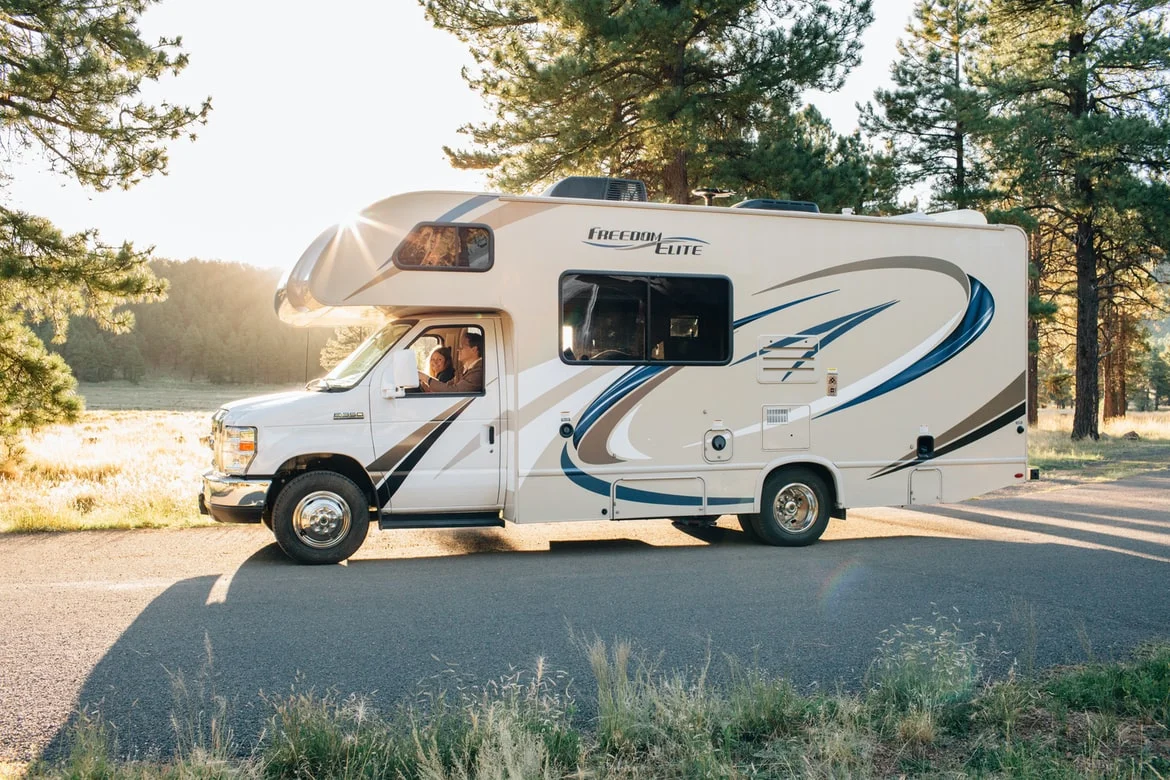10 SAFETY TIPS TO TRAVELING WITH A RV
by: Remie Longbrake | published: May 24, 2021
Many see RV camping as a way of life. Time seems to slow down and scenic destinations become a new reality. As you fill your summer weekends with plans to hit the road over the summer, don’t forget these safety tips for a safer and more relaxing get away.
Know specifics about your camper.
Driving a RV is a bit different then your daily driver. For one it’s wider, taller, and heavier. All of which makes it more difficult. Reduced visibility, height restrictions, and route planning are just a few of the obstacles RV drivers face on the road.
1. Make sure your route is RV-friendly. Consider using an RV-specific GPS device or a Trucker Atlas to avoid low bridges and other restrictions on your route.
2. Give yourself plenty of room when making a turn. Whether you’re driving a motorhome or towing a trailer you will need to pull farther forward before starting your turn. Take time to practice making turns and backing up before your big trip. A big, empty parking lot is a great place to test how your RV makes a tight turn.
3. Write down the height of your RV. Secure a notecard with your RV’s exact height and weight onto your dashboard. As you drive, pay attention to the clearance signs posted on most overpasses. Keep in mind some gas station and restaurant drive-thru canopies may be shorter than your RV.
4. Check your state’s license requirements. Some states require special non-commercial licenses for driving certain classes of RVs. 5. Be aware of traffic conditions on your route. Avoid delays on your trip by checking traffic and construction updates. There are several free apps and websites that provide real-time traffic updates.
Pack safety essentials.
The freedom and autonomy of RV camping means you need to prepare and pack for what you’ll expect and what may come up.
6. Include these safety items on your RV packing list:
- First-aid kit
- Fire extinguisher
- Jumper cables
- Duct tape
- Electrical tape
- Motor oil & fluids
- Tire pressure gauge
- Extra batteries
- Battery charger
- Wheel blocks
- Campground’s contact information
- List of emergency contacts
- RV registration
- Insurance papers
- Warranty documents
- Tarp
- Collapsible shovel
- Flashlights
- Surge protector
- Extension cords
- Water bottles
- Medications
Be safe in your RV
It’s important to know the safety features your RV may or may not have.
7. Ask all passengers to wear a seatbelt. All passengers, especially children, should wear a seatbelt while the vehicle is in motion.
8. Identify the safest riding seats available. Children should always sit in designated, front-facing travel seats, not side-facing seats. If you are traveling with a baby that requires a rear-facing car seat, look in your RV’s owner’s manual on where is the best place to secure the car seat. Some RV’s may not have proper mounting for a rear-facing car seat so it may be best to also drive a vehicle for children requiring a car seat.
9. Make sure heavy items are secured. It’s best to strap down large or heavy items that can move around. Items that you may store in cabinets also make sure they are secure and that the cabinets are locked.
10. Passengers ride right. Certainly if your vehicle is a pull-behind or 5th-wheel, never have passenger ride in anything but the vehicle doing the pulling.
We we hope you enjoy your summer trips! Be safe while travelling and remember the bug spray!
